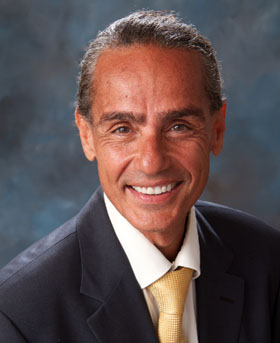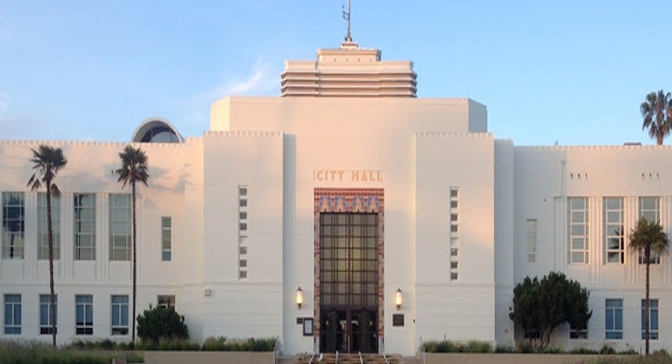Santa Monica Daily Press
By Michael Feinstein
April 25, 2016
The best electoral systems give voters a realistic chance to elect candidates who reflect their views. In most industrialized democracies, this is accomplished by electing people using a form of voting called proportional representation.
Under systems of proportional representation, if there are 100 seats in a state legislature and Democrats get 40% of the vote, Republicans 30%, Greens 20% and Libertarians 10%, then Democrats would win 40 seats, Republicans 30, Greens 20 and Libertarians 10. This is how most democracies work, in countries the United States is most often compared with.
For local municipal office, there are far fewer seats than in state or federal legislatures. In Santa Monica, we elect seven members each to the City Council, School Board and College Board, and five to the Rent Board. In our compact 8.3 square mile city, all members are elected in city-wide elections. The top vote-getters in each race are elected, up to the number of seats up for election.
Key advantages to Santa Monica’s current electoral system
In Santa Monica, voters can vote for as many candidates as there are seats, and candidates have to draw support from all parts of the City to be elected. This gives each voter a voice in electing the entire City Council, as well as the other local elected bodies that makes decisions upon her/his behalf.
Because candidates need support from voters across the city to be elected, they must demonstrate knowledge on a range of issues affecting many parts of the city – and to be re-elected, that they’ve worked for comprehensive solutions for the community. This is especially critical in a small place like Santa Monica, where what happens in one part of the city can easily affect another, and our daily lives bring us to many parts.
Adding ranked-choice voting
The advantages of Santa Monica’s current system can be built upon by allowing voters to rank as many candidates at they would like in order of preference. Giving voters a greater capacity to express their preferences leads to more empowered voters and more representative elections.
Such a ‘ranking the candidates’ system is called Ranked Choice Voting (RCV). It’s already in use in Oakland (http://www.acgov.org/rov/rcv/), Berkeley, San Leandro and San Francisco (http://www.sfelections.org/demo/) in California and other cities like Minneapolis (http://vote.minneapolismn.gov/rcv/index.htm0) and St. Paul (http://votestpaul.org) in Minnesota.
The proportional representation form of RCV for multi-candidate elections – as we could employ in Santa Monica – is used in Cambridge (MA) (https://www.cambridgema.gov/election2015/ccouncil/15CouncFinal%20Round15.htm) and by every voter in at least one elections in, Australia (http://www.eca.gov.au/systems/proportional/), Ireland (http://www.environ.ie/sites/default/files/publications/files/guide_to_ireland_pr-stv_system_0.pdf), Malta and Scotland (http://www.gov.scot/Topics/Government/Elections/guidance/VotingSystems2).
Under ranked-choice voting, voters can freely rank as many candidates as they want in the order of their preference. Voters can rank freely knowing that second and lower preferences will never count against their top, first choice – and so on with lower preferences versus higher ones (http://www.fairvote.org/rcv#how_rcv_works). This option to rank candidates is especially relevant and valuable in competitive elections like for City Council in 2014, when there were eight strong candidates for three seats, including two incumbents. All eight candidates had long community records, and all were within the ‘no growth’/’slow growth’/’smart growth’ development spectrum. That produced many hard choices for voters.
Under our current voting system, what happens if you favor more candidates than there are seats, or if you prefer one candidate over another, but have several votes to cast? Who gets your votes? The candidates you favor most? The ones you think have the best chance at being elected? Will one of your votes for a less favored candidate, undermine another of your votes for your more favored candidate? Is it a waste to vote for someone expected to win, or is it a risk not to? Is it better to cast all of your votes or some of them? How can you know the answer to any these questions when casting your vote?
With ranked choice voting all these problems disappear – and the voice of the voter is more clearly reflected in the final results, making our local elections more reflective and fair.
Previous City Council direction
In 1992 the City Council appointed a Charter Review Commission to look at district elections. The Commission came back recommending ranked choice voting instead. In 1997 the Council hosted a study session on RCV. In 1999, the City Council gave City Staff direction to look into RCV for use in Santa Monica elections. The City Clerk’s office conducted a public workshop on it, in conjunction with the Santa Monica League of Women Voters. Afterwards the League took this position: “The League of Women Voters of Santa Monica supports consideration of alternative voting systems for Santa Monica elections with a special emphasis on the Single Transferable Vote (STV) or Choice system [earlier names for RCV]. (http://www.lwvsantamonica.org/files/votingsystemsfinal09.pdf)
But in late 2001, a pro-electoral districts measure qualified for the November 2002 ballot – Measure HH. In response, the City Attorney’s office advised that City Staff couldn’t work any further on RCV while HH was on the ballot, lest the City be seen as partisan. The result was that by the time that HH was routed 64% to 36% at the polls, the Council had moved on to other issues, and the momentum to complete the study dissipated.
Measure HH failed at the polls for the traditional reasons districts have been considered a bad idea in Santa Monica – residents would be restricted to choosing only one of seven Council members that represent them, and would lose their voice on the other six. At the same time, six of seven council members would no longer need votes from any given district to get re-elected – structurally disempowering neighborhoods and individuals, and reducing city-wide accountability of elected officials.
Solving vote-splitting and next steps
One of the common frustrations for many voters from the 2014 City Council elections was the concern about significant ‘vote-splitting’ among the multiple strong candidates – as well as what could be done about it, other than to wish fewer candidates had been in the race.
The best electoral systems reward more democracy, not discourage it. Ranked-choice voting addresses vote-splitting conflicts by empowering voters to rank as many candidates as they’d like, then consolidates voters preferences to elect the winners. Because different voters will rank candidates in different orders, the result is more proportional and reflective of the diversity in the community. In this way RCV promotes more fair representation, while simultaneously rewarding a broad community base.
The City Council last looked at ranked-choice voting in 2005, giving City Staff direction to review San Francisco’s upcoming first-time election with it. Its now been ten years since RCV has been in use in San Francisco and five years in Alameda County. Its no longer theoretical. There is an empirical record within our state to study and learn from.
By giving voters more voice and choice, ranked-choice voting could improve and enrich our local democracy. Its time for City Council to establish a process to explore how it could work in our community.
 Michael Feinstein is a former Santa Monica Mayor and City Councilmember, and an Activist Advisory Boardmember for FairVote, a national voting systems education organization based in Takoma Park, MD www.fairvote.org.
Michael Feinstein is a former Santa Monica Mayor and City Councilmember, and an Activist Advisory Boardmember for FairVote, a national voting systems education organization based in Takoma Park, MD www.fairvote.org.
